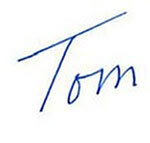Well, that certainly didn't play out the way we expected.
2021 was a wild ride for the Chicago Cubs, who shook off a slow start (an 11-15 April) by heating up in May (19-8) and climbing into first place. They sat atop the NL Central as late as June 24th, when things were looking pretty good on the North Side: Kyle Hendricks was on an eight-game quality start streak and the back end of the bullpen -- Tepera, Chafin, & Kimbrel -- was absolutely lights out.
But then the wheels fell off. The Cubs went on an eleven-game losing streak just as the Brewers put together an eleven-game win streak. Fade to black.
By the time that streak was over, they'd dropped from 1st place to 4th place -- nine games back of Milwaukee. And if the non-signing of Kyle Schwarber and the "trade" for Yu Darvish hadn't clearly signaled what was yet to come, the standings certainly did.
The front office cut payroll at a pace that would make the Tribune Company blush and P. K. Wrigley smile.
Within a month, Tom Ricketts ... er ... Jed Hoyer had traded Tepera, Chafin, Pederson, Kimbrel, and Marisnick, followed by three consecutive gut punches to the Friendly Confines faithful: trades of Baez and Bryzzo.
Image Credit: Obvious Shirts
While some lauded the prospects that the Cubs got in return, as well as a couple of Wrigley-ready players (Heuer, Madrigal), the jettisoning of payroll was no surprise to those who heard Tom Ricketts' complaints about suffering "biblical losses" in 2020.
By the trade deadline, the North Siders were 12.5 games back, with only the Pirates to thank for staying out of the NL Central cellar.
Looking through one lens, the trades made sense: the Cubs were out of contention, and many of those players would become free agents at season's end. Trade them now and get something in return, or let them walk in the offseason and get nothing.
But looking through another lens, the trades should never have happened. A big market team should be able to build around a core of players.
The Yankees have finished lower than 2nd place only three times since 1992. Read that again: the Yankees have finished 1st or 2nd in their division 26 of the past 29 seasons. The Dodgers have done it 20 times in the past 28 seasons.
Smaller market teams like Boston and St. Louis have had similar success. So the issue isn't that the Cubs held a fire sale in July. The issue is how the ownership and management of a team in the third-largest market -- with a rabid (and unafraid to spend) fan base -- let things get to the point where a fire sale was the best option.
The balance of the 2021 campaign was embarrassing: a .357 winning percentage (even worse than the Pirates) and setting a record of fielding more players in a season than any team in MLB history. (File under "tell me that your team is bad without telling me that your team is bad.")
The on-field, regular season tryouts for the 2022 Cubs led to a few bright spots: Patrick Wisdom set a Cubs rookie record for HRs, Frank Schwindel absolutely mashed (1.002 OPS), and Codi Heuer looked great (3.14 ERA, 137 ERA+).
While 2021 was painful, the good news is that the Wrigley faithful had just experienced the Golden Age of Cubs baseball: five playoff appearances and a World Series victory in a six-season span.
The bad news is that a big question remains ... will 2022 be more comparable to 2014 or to 1974? To 2015 or to 1946?
Fans would love to think it'll be more like 2014 or even 2015, but the owners' focus on Wrigleyville real estate development (see also: hotel, restaurant, casino, et al.) smacks of previous owners' focus on selling chewing gum or newspapers.
There are a few bright spots on the current roster, but it sure feels like 2022 will be more like 1974 or 2011 than like 2015. (Here's hoping it's not like 1946.) Time will tell.
Either way, we'll be here to cheer 'em on. Here's hoping the Ricketts family decides to put on the big market pants and field a competitive team. Otherwise, somewhere, P. K. will be smiling.
Go Cubs go!
Image Credit: Chicago Cubs
|



No comments :
Post a Comment